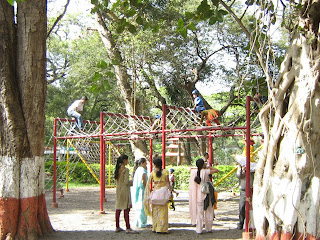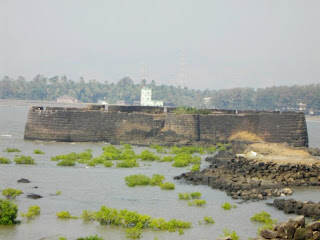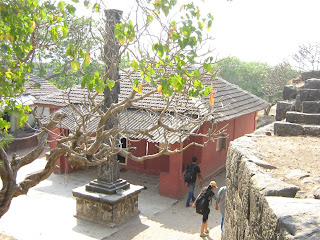Peshwe park a.k.a Peshwe Udyan is located at Parvati, Pune. It has been named after the Peshwas who were prime ministers to the kings and owners of the Parvati area. The park is located adjacent to the Sarasbaug garden and in the vicinity of the Parvati temple hill. Previously the area was a part of a lake that was subsequently converted into a garden.
The Peshwe park is now also called as the Peshwe Adventure Park, especially after the induction of several adventure sport activities like net climbing, rope climbing,wall climbing,grappling,tower climbing, balancing, high altitude cycling, rope skidding, crossing the pond on a rope etc just to name a few (for age groups 3-16).
The children are also provided a safety gear to practise their adventurism (ofcourse under watchful supervision of instructors).
The idea behind the park is to remove the fear element in kids from a young age as was first mooted by its designer BS Deshmukh.
Skills like balancing, decision making are also imparted at an young age.
Previously there was a zoo in these premises which since has been relocated at Katraj.
But what has still been retained is the famous 'Fulrani' toy train .
The toy train is located near the childrens playground which comprises of typical kid amusement activities like see saw, slides, swings etc).
There are also educational models of Solar energy , Hydel energy and Biogas energy projects etc which provide information about their basic concepts to these young minds.
The PMC maintains the park and charges Rs 10/- per person (Rs 100/- for foreign nationals). The ticket timings for the park are 9.30 am- 3.30 pm , 4.00 pm -5.30 pm (tentatively).
Outside the park premises are refreshment stalls/eateries as also privately managed amusement activities like ferris cartwheel, horse riding, horse cart riding, carousel, merry go rounds, disney slides etc that charge fees around Rs 10-12.
Miscellaneous photographs:
Text and Photographs: Abhijit Rajadhyaksha




























































































